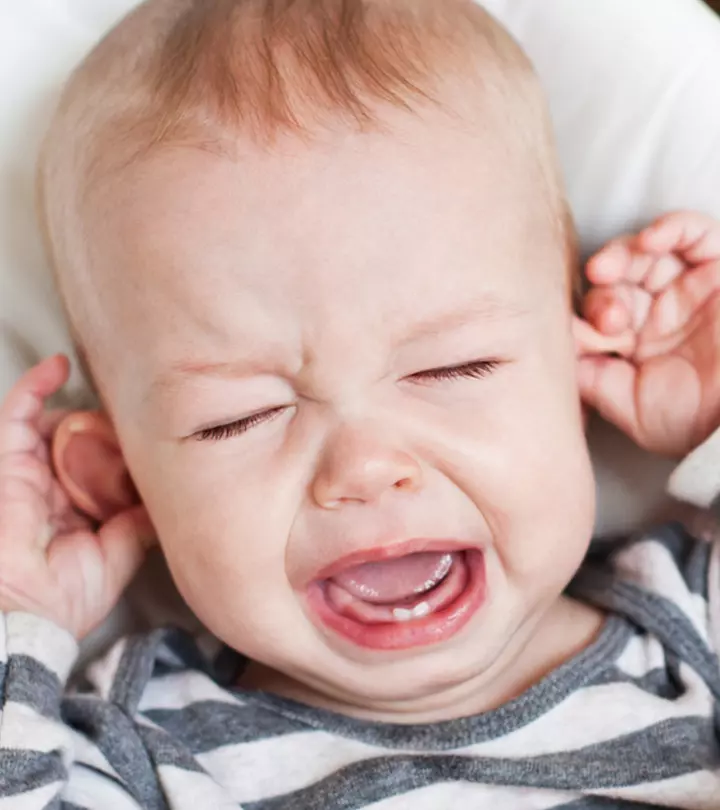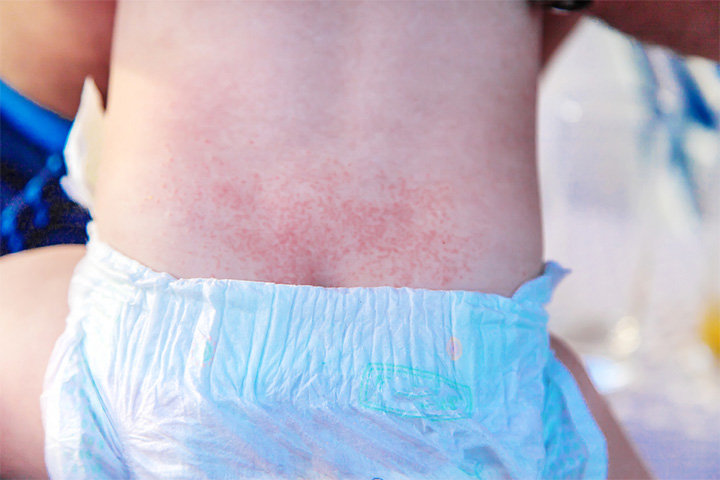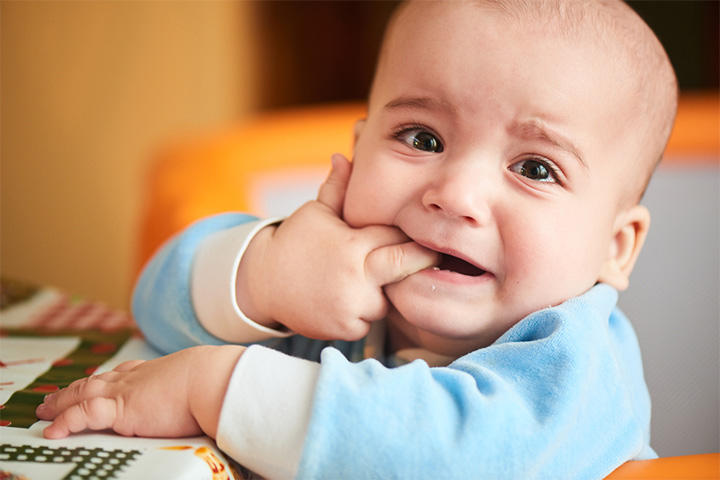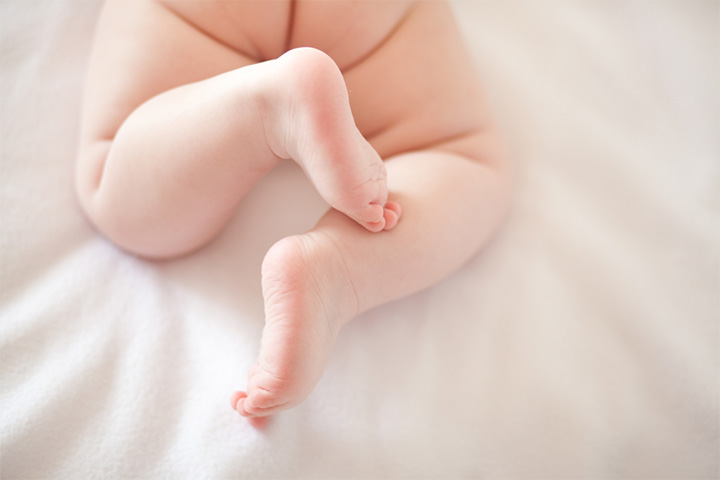
Image: Shutterstock
Being a parent is preparing for everything and still worrying about the tiniest bit that goes wrong. The moment you get the good news, you must have ransacked articles and books on how to raise a newborn. You try your best to protect your baby from everything, but some things are bound to happen and are beyond your control. A few of these laborious problems are teething and diaper rash. The answer to if teething and diaper rash are related is both a yes and a no. Rashes are common in infants, and this is when kids get irritated and clingy. You can do all the research, but you will still be worried when this actually happens. This could coincide with teething, and there goes your good night’s sleep! It also makes parents believe that either of them works as a stimulant for another. Let us go into details of what causes diaper rash and why it could be related to teething.
Teething
Image: Shutterstock
When your baby starts teething, you will notice tiny teeth appearing on the lower jaws resembling grains of rice. They are usually the central incisors and appear when your baby is six months old. The second molars appear at the end of 30 months. The process is rather annoying for both the baby and the parents. It may include symptoms like-
- Pain
- Irritation
- Drooling
- Facial rashes
- Disturbed sleep
- Ear-rubbing
- Irrational sucking
- Gum-rubbing
- Reduced appetite
- Biting
- Mild fever
Parents also suffer from stress and insomnia due to teething symptoms. If your baby did not undergo any discomfort during the teething, consider yourself lucky. It takes about 30 months for a set of 20 teeth to appear, and it takes about a week for a single tooth to appear, so your baby might show the symptoms for a week, and you have to keep teething into consideration when the baby is irritated and tries to chew everything in hand.
Diaper Rashes
Image: Shutterstock
Diaper rashes are relatively common, and every three in four babies deals with the problem. These rashes could be tiny pink specks on the skin or harsh red rashes that are rather painful. They usually occur in babies in the age group of 9-12 months. The leading causes could be the following.
- Delayed diaper change
- Diarrhea
- Antibiotics
- Bacterial infections
- Prolonged touch with stool or urine.
By this, we come to know that diaper rash and teething don’t share common symptoms, and they are not stimulating the other problem. However, when babies are teething, they go through salivation. This, in return, can upset their stomach and cause diarrhea. Another reason is if you have a teething baby at home, you will notice how tough it is to stop them from picking up almost everything and stuffing them in their mouth. Their itching gums make them try to chew everything to soothe the irritation. Even though you might be keeping everything clean, there is a good chance they are chewing on their clothes or even putting a toy in their mouth which will upset their stomach. This gives way to diarrhea and hence rashes. The best way to limit this is to ensure all their toys are washed and dried before being allowed to be near them. Also, you can bring some child-safe teethers that will help them relieve the pain and help the teeth come out quickly.
How To Protect Nappy Rash While Teething
Image: Shutterstock
So now that we know teething does have a link with diaper rash, in the long run, it might help you stop the rash before it happens. Here are some preventive measures to help avoid the rashes altogether.
Timely Diaper Change
Image: Shutterstock
Babies pee and poop more than you think, which also means that they soil their diapers real fast. While you might think that you just changed the diaper 10 minutes ago, the acidic waste can damage sensitive skin and give rashes. So it is essential to keep a check on the nappies and change them the moment they get soiled.
Clean With Warm Water
Image: Shutterstock
If you use wet wipes, make sure they are moisturized, and if you use water and cloth, keep the water lukewarm. Do not scrub the skin, as that could cause additional rashes.
Use Ointments
Image: Shutterstock
Many diaper rash creams are in the market that are specially made to heal delicate skin from rashes. Some infants have sensitive skin, which makes them bruise with every cream put on them. Using rash creams will help protect the skin and create a barrier against the moisture.. Make sure your diaper cream contains zinc to help the skin heal in time.
Air Out
Image: Shutterstock
Your baby needs to enjoy some breeze in the sensitive skin. Wrapping up in nappies is what gives way to rashes and itching. Make sure you give a few minutes of airing out after cleaning the soiled nappy.
Parenting a newborn is always full of challenges as this is the age when they cry, and you don’t know the exact cause for the inconvenience. It is essential to remain calm and ask your pediatrician for help. So do you have any expert advice to help your kid through the teething process? Let us know in the comments section.



















